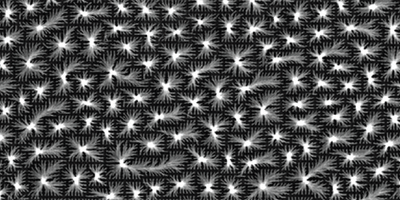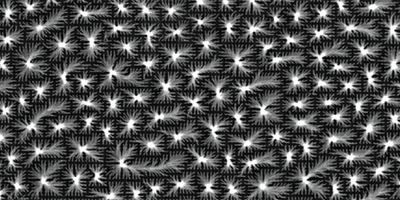Meniscus Lithography
The darker periphery in the stain from spilled coffee is an example of a pattern produced by evaporation in a self-organizing system. This so-called coffee ring effect is caused by capillary flow that moves particles to the edges of the evaporating droplet.
In many systems it is difficult to control how patterns form as liquids evaporate. In particular, the capillary forces generated by the liquid menisci between individual particles are often erratic. The process is also complex; the menisci drive the pattern but, in turn, depend on how the particles themselves are organized.
In a paper published in Physical Review Letters, Sung H. Kang and colleagues at Harvard University describe a process that demonstrates long-range control in pattern formation in evaporating liquids. They work with periodic arrays of nanopillars made of epoxy with a liquid sandwiched between them. Moiré-patterned arrays are left behind after evaporation modifies the originally uniform surfaces. This dynamic feedback mechanism—arrays of pillars modify the sandwiched liquid and pattern the menisci, which in turn bend the pillars in predetermined directions—provides a promising long-range force-mediated patterning mechanism, which the authors term meniscus lithography. – Sami Mitra





